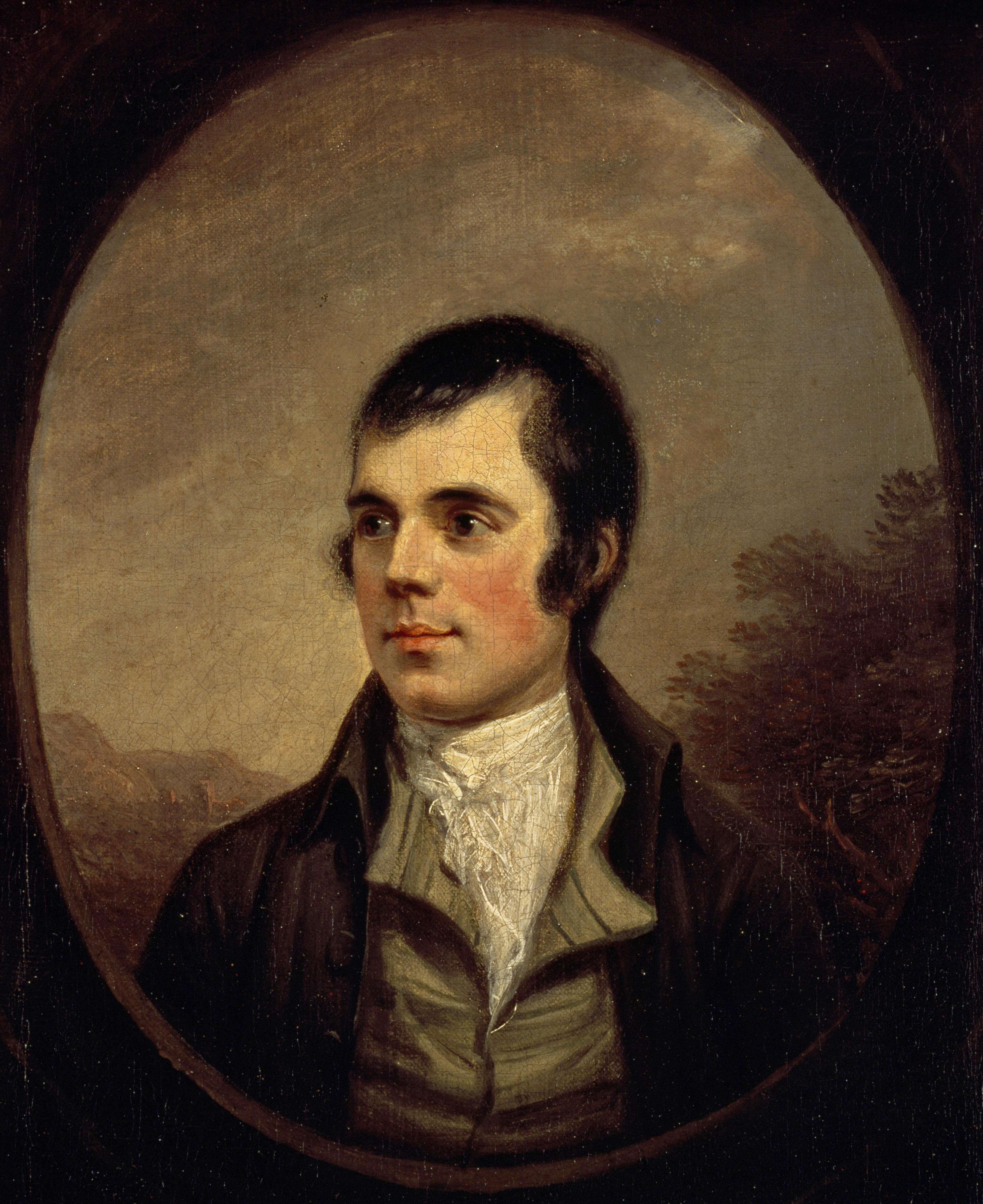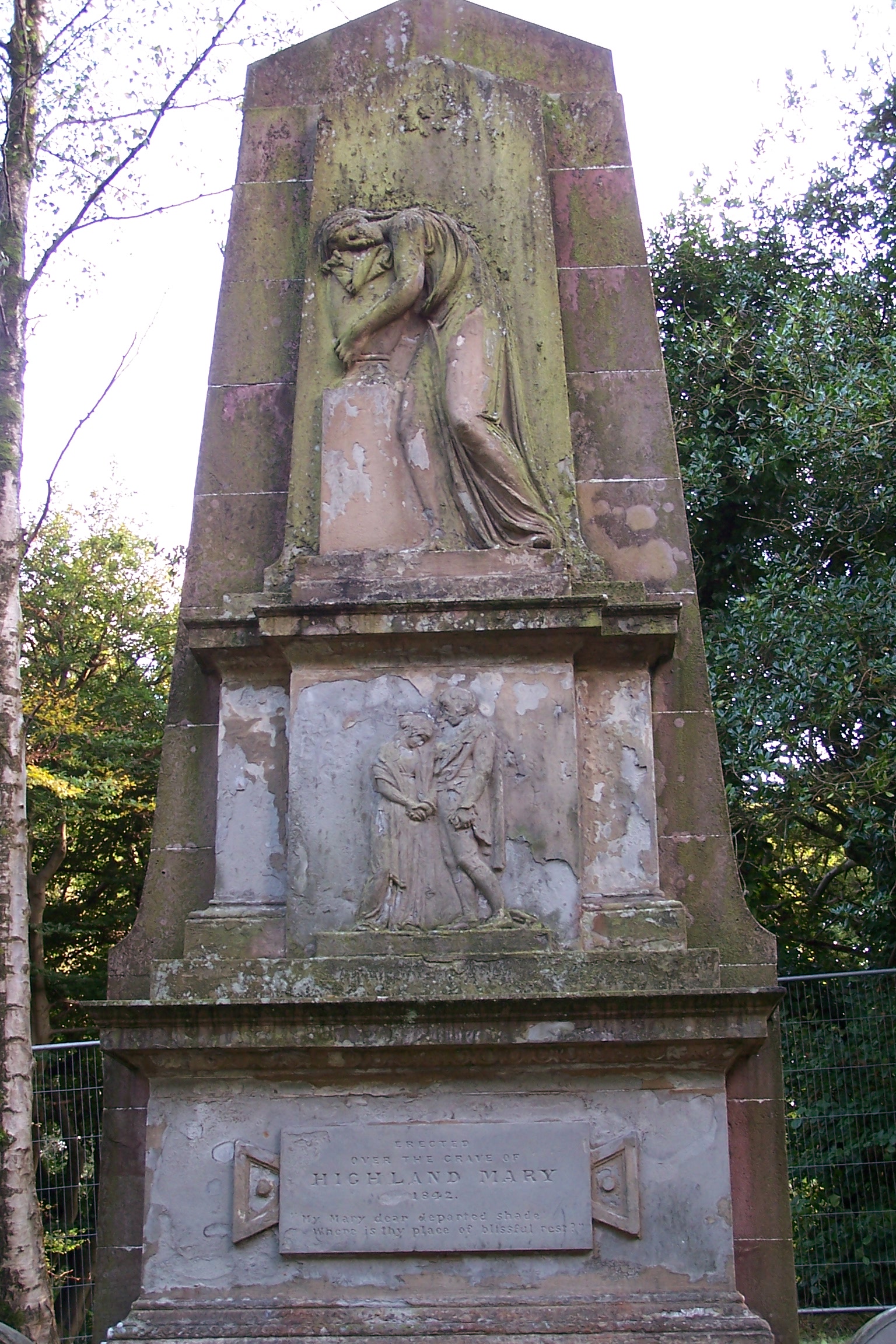|
Kate Kemp
Kate Kemp of Barskimming lived with her father at the Bridge House on the northern side of the single span Barskimming Old Bridge (Barskimming Auld Brig), River Ayr, Scotland. Both Robert Burns and James Andrew, the miller at Barskimming Mill, had a romantic interest in her and one visit led to the composition of the poem and dirge " ''Man was made to Mourn''". Life and character Her father may have been the James Kemp of Barskimming who is recorded in the Parish of Stair as the father of William Kemp who was baptised on 19 August 1766 being around eighteen in 1784 and any sibling a likely similar age. No other 'Kemp' births are recorded around this time, however in 1781 a Margaret Kemp from Mauchline came to live in the parish of Stewarton with a 'clearance certificate' of good character. Kate lived in a sylvan and delightfully rural location at the old Barskimming Bridge or Kemp's House (NS4906525460) that lay on the north or Mauchline side of the road to Stair about two mi ... [...More Info...] [...Related Items...] OR: [Wikipedia] [Google] [Baidu] |
River Ayr
The River Ayr (pronounced like ''air'', ''Uisge Àir'' in Gaelic) is a river in Ayrshire, Scotland. At it is the longest river in the county. The river was held as sacred by pre-Christian cultures. The remains of several prehistoric sacrificial horse burials have been found along its banks, mainly concentrated around the town of Ayr. Etymology The name ''Ayr'' may come from a pre-Celtic word meaning "watercourse". ''Ayr'' could also be of Brittonic derivation, perhaps from the element ''*ar'', an ancient river-name element implying horizontal movement. The town of Ayr was formerly known as ''Inver Ayr'' meaning "mouth of the Ayr" (see Inver), but this was later shortened to just ''Ayr''. Geography The River Ayr has a catchment area of . The river originates at Glenbuck Loch in East Ayrshire, close to the border with Lanarkshire. It winds its way through East and South Ayrshire to its mouth at the town of Ayr, where it empties into the Firth of Clyde. On its way, the river pa ... [...More Info...] [...Related Items...] OR: [Wikipedia] [Google] [Baidu] |
Ellisland Farm
Ellisland Farm lies about 6.5 mi/10.4 km northwest of Dumfries near the village of Auldgirth, located in the Parish of Dunscore, Dumfries and Galloway, Scotland. The complex is a museum in the farm Robert Burns built, lived in and farmed from 1788 until 1791.Wilson, Page 9 History William Roy's map, circa 1747–55, does not show any form of settlement at Ellisland. However William Crawford's 1804 map of Dumfries-shire marks an 'Elliesland' as expected, the farm having been built a few years before. The name is said to be derived from ''"Isle's Land"'', the name of a neighbouring estate.Hendry, Page 42 The river may have been less of a barrier to transport than today and a ford is known to have existed nearby. Patrick Miller of Dalswinton wrote of the area in September 1810, saying; ''"When I purchased this estate about twenty-five years ago, I had not seen it. It was in the most miserable state of exhaustion, and all the tenants in poverty. .... When I went to ... [...More Info...] [...Related Items...] OR: [Wikipedia] [Google] [Baidu] |
1760s Births
Year 176 ( CLXXVI) was a leap year starting on Sunday (link will display the full calendar) of the Julian calendar. At the time, it was known as the Year of the Consulship of Proculus and Aper (or, less frequently, year 929 ''Ab urbe condita''). The denomination 176 for this year has been used since the early medieval period, when the Anno Domini calendar era became the prevalent method in Europe for naming years. Events By place Roman Empire * November 27 – Emperor Marcus Aurelius grants his son Commodus the rank of ''Imperator'', and makes him Supreme Commander of the Roman legions. * December 23 – Marcus Aurelius and Commodus enter Rome after a campaign north of the Alps, and receive a triumph for their victories over the Germanic tribes. * The Equestrian Statue of Marcus Aurelius is made. It is now kept at Museo Capitolini in Rome (approximate date). Births * Fa Zheng, Chinese nobleman and adviser (d. 220) * Liu Bian, Chinese emperor of the Han Dynasty ( ... [...More Info...] [...Related Items...] OR: [Wikipedia] [Google] [Baidu] |
18th-century Scottish Women
The 18th century lasted from January 1, 1701 ( MDCCI) to December 31, 1800 ( MDCCC). During the 18th century, elements of Enlightenment thinking culminated in the American, French, and Haitian Revolutions. During the century, slave trading and human trafficking expanded across the shores of the Atlantic, while declining in Russia, China, and Korea. Revolutions began to challenge the legitimacy of monarchical and aristocratic power structures, including the structures and beliefs that supported slavery. The Industrial Revolution began during mid-century, leading to radical changes in human society and the environment. Western historians have occasionally defined the 18th century otherwise for the purposes of their work. For example, the "short" 18th century may be defined as 1715–1789, denoting the period of time between the death of Louis XIV of France and the start of the French Revolution, with an emphasis on directly interconnected events. To historians who expand ... [...More Info...] [...Related Items...] OR: [Wikipedia] [Google] [Baidu] |
History Of East Ayrshire
History (derived ) is the systematic study and the documentation of the human activity. The time period of event before the invention of writing systems is considered prehistory. "History" is an umbrella term comprising past events as well as the memory, discovery, collection, organization, presentation, and interpretation of these events. Historians seek knowledge of the past using historical sources such as written documents, oral accounts, art and material artifacts, and ecological markers. History is not complete and still has debatable mysteries. History is also an academic discipline which uses narrative to describe, examine, question, and analyze past events, and investigate their patterns of cause and effect. Historians often debate which narrative best explains an event, as well as the significance of different causes and effects. Historians also debate the nature of history as an end in itself, as well as its usefulness to give perspective on the problems of the p ... [...More Info...] [...Related Items...] OR: [Wikipedia] [Google] [Baidu] |
Peggy Thompson
Margaret "Peggy" Thompson, later Margaret Neilson, was the housekeeper at Coilsfield House or Montgomery Castle in Ayrshire, Scotland. She married John Neilsen of Monyfee. The couple lived at Minnybae Farm near Kirkoswald. She was the 'charming Fillette' of Robert Burns fame and her husband was an old acquaintance of the poet. It was on 23 August 1775 that she was first seen in her garden by Burns when he was out at noon in the school's backyard measuring the altitude of the sun. Peggy in later life moved to Ayr where her children still lived in 1840. Association with Robert Burns As stated Burns first met her when he was studying at Kirkoswald school in the summer of 1775 under the schoolmaster Hugh Rodger (1726-1797). She lived with her parents, next door to the school, and Robert Burns recorded that she ''"over-set my trigonometry, and set me off in a Tangent from the sphere of my studies"''. Robert Burns met Peggy Thompson frequently at Tarboth or Tarbolton Mill and they ... [...More Info...] [...Related Items...] OR: [Wikipedia] [Google] [Baidu] |
Ann Park
Helen Anne Park,Burns Encyclopedia Retrieved : 27 February 2012 known as Anna Park (used throughout for consistency) or Ann Park, was born in 1769 at , Scotland. She was thought to have been the daughter of Joseph Park, an Edinburgh coachmaker, and Jean Dick. However, recent researchGreenshields, p.22 has shown that she was actually the daughter of Walter Park and Elizabeth Blacklock. Margaret Ewing nee Park, a onetime landlady of 'The Globe', was her sister and she worked there as a barmaid. Anna bore the poet an illegitimate child ... [...More Info...] [...Related Items...] OR: [Wikipedia] [Google] [Baidu] |
Jessie Lewars
Jessie Lewars also known as Mrs. James Thomson,Westwood, Page 1 was the youngest daughter of John Lewars, a supervisor of excise. Following the death of her 69-year-old father in 1789, Jessie was only 11 years old, when she and her brother John moved to a house in Millhole Brae (now Burns Street) that lay opposite that of Robert Burns in Dumfries. Jessie was a close Burns family friend and when nearly at the age of eighteen helped the family by nursing Robert in the days leading up to his death and doing the domestic chores.Mackay, page 624Westwood (2008), Page 96 Life and character Jessie had a brother and also an older sister, Mary, who married William Hyslop, a Dumfries builder. As teasingly predicted by Robert Burns, Jessie married James Thomson, a lawyer or solicitor, in Dumfries on 3 June 1799. The couple had five sons and two daughters. The sons were James (1800–1820); John (1802–1834), who worked with his father; William (1805–1858), who was a captain in the mercha ... [...More Info...] [...Related Items...] OR: [Wikipedia] [Google] [Baidu] |
Nelly Kilpatrick
Nelly or Nellie Kilpatrick, Helen Kilpatrick or later Nelly Bone (1759–1820). Nelly (usually short for "Helen") was possibly Robert Burns's first love and muse as stated by Isabella Burns. Early life Nelly is usually used as a nickname for "Helen." Some authors give her birth year as 1760. Nelly may have been the daughter of John Kilpatrick,Mackay, page 52 the miller and his wife Jane Reid of Perclewan Mill near Dalrymple.Burns Encyclopedia Retrieved : 2012-02-06 She was baptised on 1 March 1759. Life and character  He sta ...
He sta ...
[...More Info...] [...Related Items...] OR: [Wikipedia] [Google] [Baidu] |
Jenny Clow
Janet, Jennie or Jenny Clow was a domestic servant to Mrs Agnes Maclehose, née Craig (1759-1841), the Clarinda to Robert Burns' Sylvander.Burns Encyclopedia Retrieved : 2012-02-26 She was the daughter of Andrew (or AlexanderWestwood, Page 138) Clow and Margaret Inglis from and was the youngest of eight children.Rootsweb Retrieved : 2012-02-26 Her mistress sent her to deliver a letter to the poet and he seduced her. [...More Info...] [...Related Items...] OR: [Wikipedia] [Google] [Baidu] |
Mary Campbell (Highland Mary)
Mary Campbell, also known as Highland MaryBurns Encyclopedia Retrieved : 17 March 2012 (christened Margaret, March 1763 Retrieved 23 March 2012 – 1786), was the daughter of Archibald Campbell of Daling, a sailor in a revenue cutter,Annandale, V.1, Page 173 whose wife was Agnes Campbell of Achnamore or Auchamore. Mary was the eldest of a family of four. had an affair with her after he felt that he had been "deserted" by |
May Cameron
May Cameron also known as Margaret, Peggy, or Meg Cameron,Burns Encyclopedia Retrieved : 2012-03-11 was a servant in Edinburgh, working at a house close to that of William Creech, Burns's Edinburgh publisher. retrieved : 2012-03-11 Life and character May Cameron was, as stated, a servant girl working in Edinburgh. After a brief relationship with she lost her job and had at first to rely upon the poet for funds. May married her cousin Mungo Forbes in September 1788. Mackay states that she was a Highlander.[...More Info...] [...Related Items...] OR: [Wikipedia] [Google] [Baidu] |


.jpg)


